In recent years, the insurance industry has undergone a significant transformation, driven by advances in technology and the use of data analytics. What was once a field reliant on manual processes and human judgment has evolved into a data-driven industry where algorithms and predictive models play a crucial role in nearly every aspect of decision-making. This shift is particularly evident in how insurance companies handle auto accident claims, where the use of big data has become a powerful tool to assess risk, predict costs, and, unfortunately, minimize payouts to accident victims.
Jump To:
- Risk Profiling
- Claim Severity Predictions
- Medical History and Data Mining
- Fraud Detection Models
- Surveillance: Data-Driven Decisions
- Claim Severity Predictions
- Delay Tactics
The term “big data” refers to the vast amounts of information that can be collected, stored, and analyzed by insurance companies. This data can come from a variety of sources, including telematics, which tracks driver behavior, social media activity, public records, and even credit scores. With these data points, insurance companies can use sophisticated algorithms to make quick decisions about claims. On the surface, this may seem like a step forward in efficiency, but in reality, it can work against policyholders. By relying on data-driven predictions rather than individual circumstances, insurance companies often use big data to reduce payouts, offering low settlements or denying claims based on generalized models rather than the specific needs of the victim.
In the Sarasota and Bradenton areas, where traffic accidents are common, understanding how insurance companies use big data is essential for anyone involved in an auto accident. Let’s pull back the curtain on how insurance companies are leveraging data analytics to minimize the compensation they offer to accident victims. More importantly, we will explore how experienced lawyers at Goldman, Babboni, Fernandez, Murphy & Walsh counter these tactics by challenging unfair data-driven decisions and advocating for their clients to receive the compensation they deserve. By understanding the role of big data in the insurance industry, accident victims can better protect their rights and avoid being shortchanged in their claims.
In the modern digital age, the term big data has become central to many industries, including the insurance sector. Big data refers to the collection, analysis, and utilization of large sets of information that can be mined for patterns, trends, and insights. In the context of the insurance industry, big data involves processing vast amounts of personal, behavioral, and environmental information to make faster, more data-driven decisions. This shift has allowed insurance companies to make more informed predictions about risk and claims outcomes, but it also means that data, rather than human factors, increasingly dictates how claims are handled and settled.
Insurance companies in Sarasota and Bradenton, like their counterparts across the nation, gather this massive data from various sources. Telematics, for example, involves tracking driver behavior through apps or devices in vehicles. Drivers who frequent busy intersections like US-41 and Stickney Point Road or Fruitville Road and Tuttle Avenue may have their braking patterns, speed, and mileage tracked to create risk profiles. This telematics data provides insurers with detailed insights into how safely or aggressively someone drives, which can then influence their premiums and, more significantly, how an accident claim is evaluated.
Additionally, social media activity is another resource insurers use to monitor the actions and behaviors of claimants. If a person involved in an accident at a high-traffic area like Bee Ridge Road and Beneva Road in Sarasota posts photos or updates that suggest they are not as injured as their claim implies, insurance companies may use this information to dispute the claim. Even public records, such as property ownership or involvement in previous lawsuits, and credit scores can influence how insurers assess an individual’s level of risk. For example, someone with a lower credit score may be flagged as higher risk, impacting how their claim is handled.
Insurance companies also rely on public records to pull up accident histories, medical conditions, and even employment details. A person involved in a collision on Manatee Avenue in Bradenton might have their entire driving history examined, even if the current accident wasn’t their fault. Additionally, insurance companies often consider credit scores when determining how to proceed with a claim, as lower scores are sometimes (unfairly) associated with higher-risk behavior.
Once this data is gathered, insurance companies use advanced algorithms and predictive models to analyze risk and predict outcomes for claims. For instance, after a collision at a busy intersection like Cortez Road and 26th Street West in Bradenton, big data might be used to estimate the likelihood of the injured party settling quickly, based on factors like their financial status or their prior history with claims. Insurers may also predict how much they will need to pay based on the type of injury, vehicle involved, and location of the accident. In some cases, these models may automatically generate settlement offers that are lower than what the individual is truly entitled to, especially when data suggests the claimant may not pursue legal action.
While big data enables insurance companies to streamline their processes and improve efficiency, it also allows them to make quick decisions that may undervalue the needs of the accident victim. For example, someone involved in a serious accident on I-75 in Sarasota may have their claim reduced or delayed simply because predictive models suggest they are less likely to pursue a larger settlement. These automated systems can overlook the unique circumstances of a case, such as the long-term effects of injuries or the true cost of medical care and rehabilitation.
Insurance companies are increasingly using big data to reduce the amount they pay out on auto accident claims. By leveraging advanced data analytics, insurers can quickly assess claims and identify ways to minimize compensation, often at the expense of accident victims. In cities like Sarasota and Bradenton, where busy intersections like Bee Ridge Road and Beneva Road or Manatee Avenue and 75th Street West are hotspots for traffic accidents, it’s critical for claimants to understand how insurance companies use these tactics—and how experienced legal teams can counter them to secure fair settlements.
Risk Profiling: How Insurance Companies Assess Individual Risk

One of the first ways insurance companies use big data is by conducting risk profiling, which involves gathering and analyzing personal data points such as driving behavior, location, demographics, and even credit scores. For example, if you frequently travel on I-75 or US-41, known for heavy traffic and accidents, insurance companies may flag you as a higher risk simply based on your regular driving routes. In addition to location, factors like age, occupation, and driving history (including prior accidents or traffic violations on roads like Fruitville Road or University Parkway) contribute to this profile.
What this means for accident victims is that insurance companies may use these data points to justify offering lower settlements. For instance, if data suggests that someone is young, has a lower credit score, or has been involved in minor accidents in the past, insurers may categorize them as more likely to accept a quick, lower payout without pursuing further legal action. This profiling can unfairly reduce the compensation that victims deserve, even in cases where the accident was clearly not their fault.
Claim Severity Predictions: Minimizing Payouts by Predicting Settlement Costs

Big data allows insurance companies to make claim severity predictions, which are estimates of how much a claim should cost based on data trends. After a crash at a busy intersection like Tamiami Trail and Bee Ridge Road, insurers may input details of the accident—such as the type of vehicles involved, the severity of the impact, and the general demographics of the drivers—into their algorithms to generate a projected cost of the claim.
While this process seems efficient, it often works against claimants. Insurance companies may use these predictions to flag claims they believe are less likely to be pursued aggressively. For example, someone who seems financially vulnerable or eager to settle quickly (based on demographic or financial data) may be offered a lowball settlement. The insurer’s algorithm may suggest that the claimant is unlikely to hire a lawyer or fight for more, even if the medical expenses and long-term impact of the injuries—such as those sustained in a crash on Manatee Avenue—are severe. This results in lower compensation than the claimant is entitled to, often underestimating the real costs of medical care, lost wages, and pain and suffering.
Delay Tactics: Using Algorithms to Prolong Claims and Lower Settlements

In some cases, insurance companies use algorithms to identify claims that can be delayed based on the claimant’s financial situation or likelihood to settle quickly. For example, an accident on Beneva Road and Clark Road in Sarasota might involve a claimant who is facing mounting medical bills or vehicle repair costs. If the insurance company’s data analysis indicates that the individual is in a vulnerable financial situation, the company may strategically delay processing the claim or issuing a settlement offer.
This tactic is designed to pressure the claimant into accepting a lower settlement simply because they need immediate funds. By stalling the claim, insurers aim to take advantage of the claimant’s urgency, reducing their potential payout. It’s a deliberate strategy that prioritizes the insurance company’s financial interests over the victim’s need for timely compensation. Experienced lawyers, like those at Goldman, Babboni, Fernandez, Murphy & Walsh, can recognize these delay tactics and push for quicker, fairer settlements, ensuring that accident victims in areas like Bradenton and Sarasota are not taken advantage of.
Medical History and Data Mining: Challenging the Validity of Injury Claims
One of the more invasive ways insurance companies use big data is by mining medical records and other personal data to challenge the legitimacy of injury claims. After an accident at a busy intersection like US-41 and 17th Street, insurers may request access to the claimant’s past medical history to search for pre-existing conditions. For example, if the individual had prior back pain or joint issues, the insurance company may argue that their injuries from the car accident were not entirely caused by the crash, thereby reducing the payout.
This strategy often overlooks the fact that an accident can aggravate pre-existing conditions, making them more severe. By pointing to past medical issues, insurance companies attempt to shift responsibility away from the crash and downplay the extent of the injuries, leading to lower settlements. Legal representation is crucial in these cases, as an experienced attorney can gather medical expert testimony and evidence to counter these claims and show how the accident directly worsened the victim’s health.
Fraud Detection Models: Flagging Legitimate Claims as Potentially Fraudulent
Another common use of big data is through fraud detection models. These models analyze vast amounts of information to flag claims that appear suspicious or potentially fraudulent. Unfortunately, these models are not always accurate and can flag legitimate claims, leading to delayed or denied compensation. For instance, a claimant involved in a collision at Cattlemen Road and Palmer Boulevard may have their claim flagged as suspicious if the algorithm detects patterns it associates with fraud, even though the claim is entirely valid.
Once a claim is flagged, the insurance company may investigate further, slowing down the process and creating additional hurdles for the claimant. In some cases, this tactic is used to pressure the claimant into dropping the claim or settling for less to avoid further complications. An experienced lawyer can challenge these tactics, providing evidence and pushing back against unfair accusations of fraud.
Surveillance: Data-Driven Decisions on Physical and Online Surveillance
Finally, insurance companies use big data to decide when and where to conduct surveillance on claimants. This could involve physical surveillance, such as monitoring a person’s activity after an accident on Lockwood Ridge Road, or reviewing their social media activity to find inconsistencies. For example, if someone involved in an accident at Fruitville Road and Honore Avenue posts a picture of themselves at a social event, even though they are claiming serious injuries, the insurance company may use this as evidence to dispute the claim.
However, social media posts rarely tell the full story. A single post may be taken out of context and used to question the claimant’s credibility, even if their injuries are real and significant. Legal representation is essential here to challenge misinterpretations of social media activity and protect the client’s right to fair compensation.
In recent years, insurance companies have increasingly leveraged big data to minimize payouts on auto accident claims. By analyzing large amounts of personal and behavioral data, insurers can make rapid decisions about claims—often at the expense of accident victims. In cities like Sarasota and Bradenton, where intersections such as Bee Ridge Road and Beneva Road or Manatee Avenue and 75th Street West see frequent accidents, it is crucial for claimants to understand how insurance companies use these tactics to lower compensation. Legal teams like those at Goldman, Babboni, Fernandez, Murphy & Walsh are well-equipped to counter these strategies and secure fair settlements for accident victims.
Claim Severity Predictions: Minimizing Payouts by Predicting Settlement Costs
Big data allows insurance companies to make claim severity predictions, using data trends to estimate how much a claim should cost. After an accident at a busy intersection like Tamiami Trail and Bee Ridge Road, insurers input details about the vehicles, the impact, and the demographics of those involved into their algorithms. This generates a projected cost for the claim.
While this might seem efficient, it frequently works against claimants. Insurers may use these predictions to flag claims they believe won’t be aggressively pursued. For example, if an accident occurs on Manatee Avenue and the data suggests that the claimant is financially vulnerable or in a hurry to settle, the algorithm might recommend a low settlement offer. The insurer may assume that the victim will settle quickly, without involving a lawyer, even if the injuries—such as those resulting from a significant crash—require extensive medical treatment. This results in lower compensation than the victim is entitled to, as the data-driven decision often underestimates the real costs associated with medical care, lost wages, and pain and suffering.
Delay Tactics: Using Algorithms to Prolong Claims and Lower Settlements
In some cases, insurance companies use algorithms to delay claims processing, particularly when the data suggests that the claimant is in a financially precarious situation. For example, an accident at Beneva Road and Clark Road in Sarasota might involve a victim facing mounting medical bills and vehicle repair costs. If the insurance company’s data analysis reveals that the individual is financially vulnerable, they may intentionally delay the settlement process.
This tactic is designed to pressure the claimant into accepting a lower offer because they need immediate funds to cover expenses. By stalling the process, the insurer takes advantage of the victim’s financial urgency, ultimately lowering the potential payout. However, the lawyers of Goldman, Babboni, Fernandez, Murphy & Walsh can identify and counter these delay tactics. By pushing for timely settlements, the legal team ensures that the claimant receives the compensation they deserve without unnecessary financial strain.
Medical History and Data Mining: Challenging the Validity of Injury Claims
One of the more invasive ways insurance companies use big data is through medical history and data mining. After an accident at a busy intersection like US-41 and 17th Street, insurers may request access to the claimant’s medical records to search for pre-existing conditions. If a person has a history of back pain or joint issues, for example, the insurer may argue that the injuries claimed in the accident were not entirely caused by the crash, thereby reducing the payout.
This tactic ignores the fact that accidents often aggravate pre-existing conditions, making them more severe. By focusing on past medical issues, insurance companies attempt to downplay the extent of the injuries, justifying lower settlements. In these situations, legal representation is crucial. An experienced lawyer can gather medical expert testimony and evidence to demonstrate how the accident worsened the claimant’s health, ensuring that the victim receives fair compensation for their injuries.
Fraud Detection Models: Flagging Legitimate Claims as Potentially Fraudulent
Big data is also used in fraud detection models, which analyze patterns to flag claims that seem suspicious. Unfortunately, these models can inaccurately flag legitimate claims, leading to delays or denials in compensation. For example, a driver involved in a collision at Cattlemen Road and Palmer Boulevard may have their claim flagged as fraudulent if the algorithm detects certain behaviors that it associates with fraud, even if the claim is entirely valid.
Once flagged, the insurance company may launch an investigation, further delaying the settlement process and creating additional challenges for the claimant. In some cases, this tactic is used to pressure the claimant into dropping the claim or accepting a lower offer to avoid complications. A skilled attorney can counter these accusations by providing evidence to demonstrate the validity of the claim and push back against the insurance company’s delay tactics.
Risk Profiling: How Insurance Companies Assess Individual Risk
One of the key ways insurance companies utilize big data is through risk profiling, where they gather and analyze data points such as driving behavior, location, demographics, and even credit scores to assess risk. For instance, drivers who frequently use I-75 or US-41, which are known for heavy traffic and accident rates, may be flagged as higher-risk individuals simply because of their regular driving routes. Insurance companies also consider other factors, such as a person’s age, occupation, and driving history, which may include past traffic violations on Fruitville Road or University Parkway. These factors contribute to a risk profile that insurers use to determine how they handle claims.
For accident victims, this type of profiling often leads to unfairly low settlement offers. A younger driver involved in a collision at Beneva Road and Clark Road might be flagged as more likely to accept a lower settlement without pursuing legal action. Similarly, individuals with lower credit scores or a history of minor traffic incidents may be categorized as high-risk and receive lower offers. This type of data-driven profiling reduces compensation even when the accident is not the victim’s fault. An experienced legal team can challenge this by focusing on the unique circumstances of the accident, ensuring that the victim receives the compensation they deserve.
Surveillance: Data-Driven Decisions on Physical and Online Monitoring
Insurance companies also use big data to decide when and where to conduct surveillance on claimants. After an accident on Lockwood Ridge Road, for example, insurers might monitor the claimant’s physical activities to find inconsistencies with their reported injuries. They may also use social media surveillance, scrutinizing posts for any signs that the claimant is exaggerating their injuries.
For instance, if someone involved in a crash at Fruitville Road and Honore Avenue posts a photo of themselves at a social event, the insurance company may use this as evidence to dispute the severity of the injuries. However, these posts often don’t tell the full story and can be taken out of context. Legal representation is essential in these situations, as an experienced lawyer can challenge misinterpretations and ensure that the claimant’s rights are protected.
In the Sarasota and Bradenton areas, insurance companies frequently use big data tactics to reduce payouts on auto accident claims. However, with the right legal representation, these strategies can be countered effectively. Here are a few case studies that illustrate how experienced lawyers at Goldman, Babboni, Fernandez, Murphy & Walsh successfully challenged big data tactics to secure fair settlements for their clients.
Example 1: Overcoming Low Settlements Based on Credit History and Financial Data
In this case, a client was involved in a car accident at the intersection of US-41 and Bee Ridge Road in Sarasota. After filing a claim with their insurance company, the insurer used the client’s credit history and financial data to assess their risk profile. The insurance company deemed the client to be financially vulnerable due to a lower credit score and past financial difficulties, flagging them as someone likely to accept a quick, low settlement offer. As a result, the insurer offered a settlement that was significantly lower than what the client was entitled to, especially given the medical expenses involved in their treatment.
The legal team at Goldman, Babboni, Fernandez, Murphy & Walsh stepped in and challenged this lowball offer by presenting strong evidence of the client’s long-term medical needs, including extensive documentation of their ongoing treatment, rehabilitation costs, and the future care required for their injuries. By focusing on the real costs of the accident and the severity of the injuries, the attorneys were able to secure a settlement that was substantially higher than the original offer. This case demonstrates how an insurance company’s use of big data to minimize payouts can be countered with thorough evidence and expert legal representation.
Example 2: Challenging Fraudulent Claim Flagging by Data Analytics
In another case, a client was involved in a rear-end collision at Manatee Avenue and 75th Street West in Bradenton. Shortly after filing a claim, the insurance company flagged it as potentially fraudulent using their fraud detection models, which had analyzed the client’s accident history and flagged patterns that the algorithm deemed suspicious. Despite the legitimacy of the claim and the severity of the client’s injuries, the insurance company initiated an investigation, delaying the settlement process and creating unnecessary hurdles for the claimant.
The legal team at Goldman, Babboni, Fernandez, Murphy & Walsh quickly intervened, providing the insurer with comprehensive medical records, eyewitness statements, and photographic evidence from the accident scene. This clear documentation showed that the claim was legitimate and that the client’s injuries were directly related to the accident. The lawyers challenged the insurer’s reliance on flawed data analytics and pushed for a full review of the case. Ultimately, the legal team secured a full settlement for the client, successfully refuting the fraudulent flagging and ensuring that the client received the compensation they deserved.
Example 3: Overcoming Social Media Scrutiny to Secure Appropriate Compensation
In this case, a client was involved in an accident at Fruitville Road and Honore Avenue in Sarasota. During the claims process, the insurance company used social media analytics to review the client’s online activity. The insurer discovered a post showing the client attending a family event and used this as grounds to argue that the client’s injuries were not as severe as claimed. The insurance company attempted to reduce the settlement, suggesting that the client was exaggerating the extent of their injuries based on this single post.
The legal team at Goldman, Babboni, Fernandez, Murphy & Walsh took swift action to counter this tactic. They provided detailed medical documentation that demonstrated the severity of the client’s injuries, including doctor’s reports, physical therapy records, and expert testimony. The attorneys also successfully argued that a single social media post taken out of context should not be used to undermine the legitimate claims of injury. By presenting a well-documented case, the legal team was able to secure the appropriate compensation for the client, ensuring that the insurance company’s use of social media did not result in an unfairly low settlement.
In cities like Sarasota and Bradenton, where intersections such as Manatee Avenue and 75th Street West or Bee Ridge Road and Beneva Road see frequent traffic accidents, it’s crucial for accident victims to understand the tactics insurance companies use to minimize payouts. Insurance companies increasingly rely on big data and sophisticated analytics to process claims, often using these tools to justify lower settlements. For accident victims, this creates a significant disadvantage, as the insurer uses data models to limit the amount they are willing to pay. This is where the experience of a knowledgeable attorney becomes invaluable.
Insurance companies utilize big data to assess risk, predict settlement costs, and even flag claims as potentially fraudulent. Without proper legal representation, victims are at the mercy of these data-driven decisions, which may not reflect the true extent of their injuries or losses. An experienced lawyer, like those at Goldman, Babboni, Fernandez, Murphy & Walsh, understands how to counter these tactics and ensure that the victim’s rights are protected. For instance, a person injured at the intersection of Fruitville Road and Tuttle Avenue may receive a lowball settlement offer based on demographic data, financial information, or driving history. An experienced attorney knows how to challenge these algorithms and negotiate for a fairer settlement based on the actual circumstances of the case, not just what the data predicts.
In an environment where insurance companies are equipped with cutting-edge technology, having an attorney who is familiar with big data practices can help level the playing field. The legal expertise of Goldman, Babboni, Fernandez, Murphy & Walsh ensures that accident victims are not unfairly manipulated by data algorithms. For example, if an insurance company attempts to reduce a settlement after reviewing the victim’s social media activity—perhaps using a post after an accident on Lockwood Ridge Road to dispute the severity of injuries—the legal team can effectively counter these claims. By presenting concrete evidence, such as medical reports and expert testimony, they ensure that the victim receives the compensation they are rightfully owed.
Furthermore, Goldman, Babboni, Fernandez, Murphy & Walsh specialize in protecting their clients from unfair settlement practices driven by big data algorithms. Whether a client’s claim is flagged as potentially fraudulent or the insurer is relying on risk profiling to justify a low payout, the firm’s attorneys know how to push back. They gather detailed evidence to challenge data-driven decisions and fight for compensation that reflects the full extent of the client’s injuries, lost wages, medical expenses, and pain and suffering. For accident victims in Bradenton and Sarasota, this expertise is critical in ensuring that they are not shortchanged by insurance companies that prioritize profit over fairness.
Protecting Your Rights in a Data-Driven Claims Environment
Insurance companies increasingly rely on big data to minimize payouts in auto accident claims. From risk profiling to settlement predictions and fraud detection models, these tactics are designed to reduce compensation for accident victims. While these methods allow insurance companies to process claims more efficiently, they often work against the best interests of those injured in accidents. In areas like Sarasota and Bradenton, where high-traffic intersections such as Beneva Road and Clark Road are common sites for accidents, victims need to be aware of how these data-driven tactics can affect their settlements.
However, with the help of an experienced legal team, accident victims can counter these tactics and secure the compensation they deserve. Goldman, Babboni, Fernandez, Murphy & Walsh are well-versed in navigating the complexities of big data-driven claims processes. Their attorneys understand how to challenge unfair practices, whether it’s disputing a low settlement offer, addressing claims flagged as potentially fraudulent, or countering surveillance tactics based on social media activity.
If you’ve been injured in an accident in Sarasota or Bradenton, don’t let big data tactics limit your compensation. Contact Goldman, Babboni, Fernandez, Murphy & Walsh today for a free consultation. Their experienced attorneys will protect your rights, ensure that your claim is handled fairly, and fight for the compensation you deserve in a data-driven insurance environment.
More On Car Accident Claims and Insurance:
Car Accidents: Statutes of Limitations
Car Accident Insurance Claims Time Limits
Expedite the Process for Car Insurance Claims
7 magic words to expedite insurance claims
3 Ways to Expedite the Insurance Claim Process
How to Deal with Health Insurance Claims Delays
The post Bradenton Attorney Reveals How Insurance Companies Use Big Data to Minimize Auto Accident Payouts appeared first on Justice Pays.




